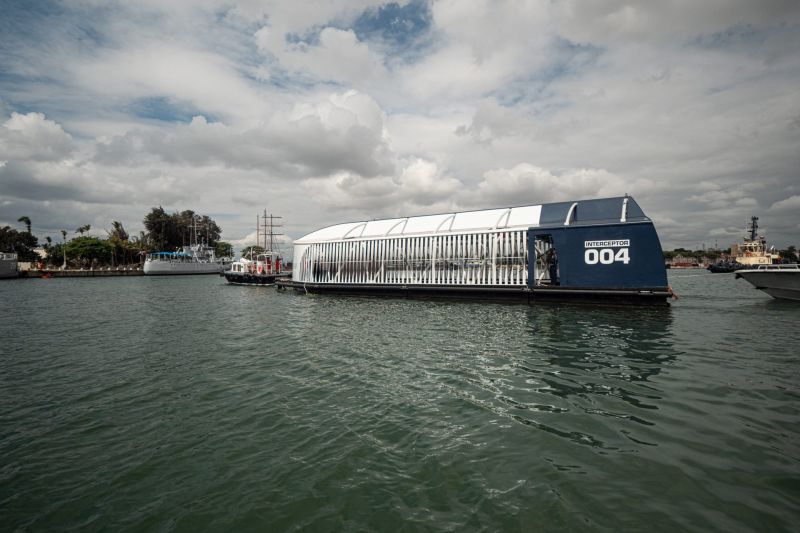Ocean Cleanup Interceptor to Clean 1000 Polluted Rivers Globally in Five Years
Determined on their target to curtail the plastic that overflow into oceans by 80 percent in the next few years, Dutch non-profit organization, The Ocean Cleanup (TOC) recently launched a solar-powered device that is said to help the company achieve this ambitious goal.

Image: The Ocean Cleanup
The organization is committed to deploying the solar-powered device across the 1,000 most polluted rivers in the world in the next five years, starting with waterways in the Dominican Republic and southern Vietnam.
First-generation of the device
Prior to its official launch, the first generation of interceptor 001 technology has been tested in Jakarta, at the mouth of the Cengkareng drain that connects the Angke River to the Java Sea. The Jakarta prototype is currently running at around quarter-capacity and requires to be emptied frequently.
More so, TOC has said the approximated waterways are accountable for containing 80 percent of the ocean trash out to sea. The remaining 20 percent of the ocean garbage, on the other hand, comes from roughly 30,000 other rivers.
Boyan Slat, the organization’s CEO founded TOC in 2013 to develop an open-ocean device aimed at removing all plastic wastes in the “Great Pacific Garbage Patch” in a span of five years.
After several repetitions and too much criticism from scientists and attention from the media, 525-foot test design gathered and retained ocean plastic wastes for the first time in October 2019.
The newest design of the Interceptor can remove 50,000 kilograms or 110,000 pounds of plastic waste every day. It can carry up to 50 cubic meters or 1,770 cubic feet of trash.
Functioning Process of Interceptor
This is yet another step for the organization to trace the main source of all plastics that flow into the waterways. TOC’s Interceptor is a floating device powered by a solar system that scoops up plastic waste floating on the surface of the water.
The Interceptor functions via solar panels on top of its white exterior shell. The unique number of each device is pointed on either one of the sides. At water level, along barrier from garbage overhangs upstream, letting the current’s force to push waste toward the mouth of the device.
There, a conveyor belt that takes the waste out of the water then puts it onto a platform inside the Interceptor, shuttling trash to one of the dumpsters. When the containers are full, the local team empties them by taking them to the shore.
The technology was initially introduced and showcased in the Netherlands. The Interceptor has already achieved quite a challenging reputation as the environment’s defender.
Moreover, the other device has been gathering around 30 tons of garbage every day from Malaysia’s Klang River, where one of the organization’s first vessels has been clearing out wastes for a couple of months now.
Further Steps
TOC has installed two interceptors till now. The second one is in Kuala Lampur, specifically on the Klang River.
According to the TOC managing director, Chris Worp, the organization plans to deploy one more Interceptor in the Dominican Republic, particularly in Rio Ozama. The fourth is set for deployment in Southern Vietnam.
Relatively donors from across the world have pledged millions of dollars in this organization to help in accomplishing the ambitious solution to the problem of the ocean plastics. However, the TOC has officially admitted that the process hasn’t been smooth.
Disadvantages of Interceptor
Although, a useful device, the Interceptor does have some disadvantages. As it functions on open waterways, it could do more harm than good during the bad weather or storms. The device could break and the debris could pollute the waterways even more.
Another challenge is the 2-meter (6.6-foot) opening of the processor, which is too small for large waste to freely pass. Sometimes, help from the additional human resources is required to handle big items, like a sofa, spring bed, and even a dead cow that turned up.
Hopefully, the organization would think of a solution to deal with these shortcomings of the device and would help free the waterways from plastic pollution.
Via: The Science Times


